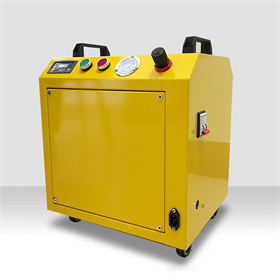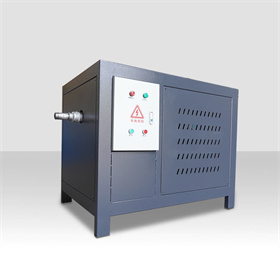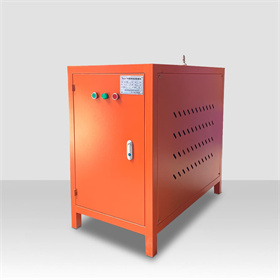Using machine learning to test foam concrete
If you are looking for high-quality products, please feel free to contact us and send an inquiry, email: brad@ihpa.net
International scientists from Saudi Arabia, China, Pakistan, India and Australia collaborated to publish a new paper on Cement and Concrete Composites, which uses machine learning to test foam concrete.

(Concrete Foam Generator)
Steel-reinforced concrete boasts exceptional strength and durability, making it a premier choice for construction projects. However, due to its carbon footprint, concrete production brings enormous environmental costs and is a key source of emissions leading to climate change. In addition, concrete waste is the main source of environmental pollution.
In recent decades, several sustainable types of concrete and cement-based additives have been studied to partially or completely replace traditional ordinary Portland cement, improve the construction industry's ecological friendliness, and enhance concrete's mechanical, physical, and physicochemical properties. Researchers are currently exploring foam concrete.
Empirical models have evolved, building upon foundational models like Feret and Balshin. However, these approaches encounter hurdles. For example, the relationship between material properties and compressive strength is complex and requires various difficult-to-determine constants.
The research focuses on applying machine learning to predict the compressive quality of concrete before manufacturing, thereby saving time, cost, and waste. In addition, machine learning algorithms can also be used to predict structural behavior. Machine learning-based technologies are rapidly becoming an indispensable part of research in the construction industry.
Due to their non-linear capabilities, the cement concrete composite materials research has employed three powerful machine learning algorithms (GEP, GBT, and ANN). Specifically, the algorithm is used to predict the compressive strength of foam concrete.
The author optimized the material ratio of water to cement and sand to cement using parameter analysis. This paper proposes model performance, parameter analysis, variable sensitivity analysis, and a method based on machine learning to select the best composition of foam concrete.
This study strongly correlates foam concrete's density and compressive strength. The author also revealed the optimal algorithm parameters for three machine learning-based models in their work. The artificial intelligence models were thoroughly refined, yielding a robust correlation coefficient (R-correlation) that underscored the remarkable consistency between the predicted and experimental outcomes.
Among the three machine learning-based approaches, the GBT model demonstrated the most outstanding performance, as evidenced by its superior validation data results. In terms of accuracy, it surpasses the other two models, with ANN ranking second and GEP being the least accurate.
In the future, there is an opportunity to improve modeling and prediction further further using machine learning algorithms. The scientists involved in this paper propose that future research should focus on variable foaming agent doses. Overall, this new paper demonstrates the advantages of machine learning methods over traditional empirical and experimental models.

(Concrete Foam Generator)
A machine that generates foam concrete can be utilized in various construction applications, such as building insulation, road construction, public facilities, and pipeline insulation, to enhance the overall quality of engineering projects and reduce energy consumption.
Building insulation
The Concrete Foam Generator is mainly used to produce lightweight foamed cement, which has the characteristics of lightweight insulation, heat insulation, and sound insulation. Therefore, Concrete Foam Generators are mainly used to fill gaps and cracks in buildings, improve the insulation performance of constructions, and reduce energy consumption.
Road engineering
A Concrete Foam Generator is mainly used in road engineering to produce foam concrete. This material has good compression, bending, and wear resistance and can be used to construct road bases, subbases, or surface courses. It can reduce the occurrence of road cracking, subsidence, and other diseases and improve the service life and durability of roads.
Public facilities
In public spaces, a machine that froths concrete can create an array of items made from foam concrete, including building blocks, boards, and bricks. These products are lightweight, fireproof, moisture-proof, and corrosion-resistant and can be used to build public facilities such as toilets, garbage bins, and parking sheds.
Pipeline insulation
In the field of pipeline insulation, Concrete Foam Generators can produce insulation layers for various pipelines, such as water pipes, heating pipes, etc. By wrapping a certain thickness of foam concrete outside the pipeline, the heat loss of the pipeline can be reduced, the pipeline can be prevented from being damaged by the external environment, and the service life of the pipeline and the energy-saving effect can be improved.

(Concrete Foam Generator)
Other fields
In addition to the abovementioned fields, Concrete Foam Generators can be applied in other fields, such as external wall insulation, moisture prevention, corrosion resistance, etc. Adopting appropriate formulas and technical parameters can meet the performance requirements of foam concrete products in different fields.
Supplier
TRUNNANO(cabr-concrete.com) is a supplier of Concrete Foam Generator in Concrete, which is concrete and relative products with over 12 years experience in nano-building energy conservation and nanotechnology development. It accepts payment via Credit Card, T/T, West Union and Paypal. Trunnano will ship the goods to customers overseas through FedEx, DHL, by air, or by sea. If you are looking for high quality Concrete Foam Generator, please feel free to contact us and send an inquiry. (sales@cabr-concrete.com).
Inquiry us







